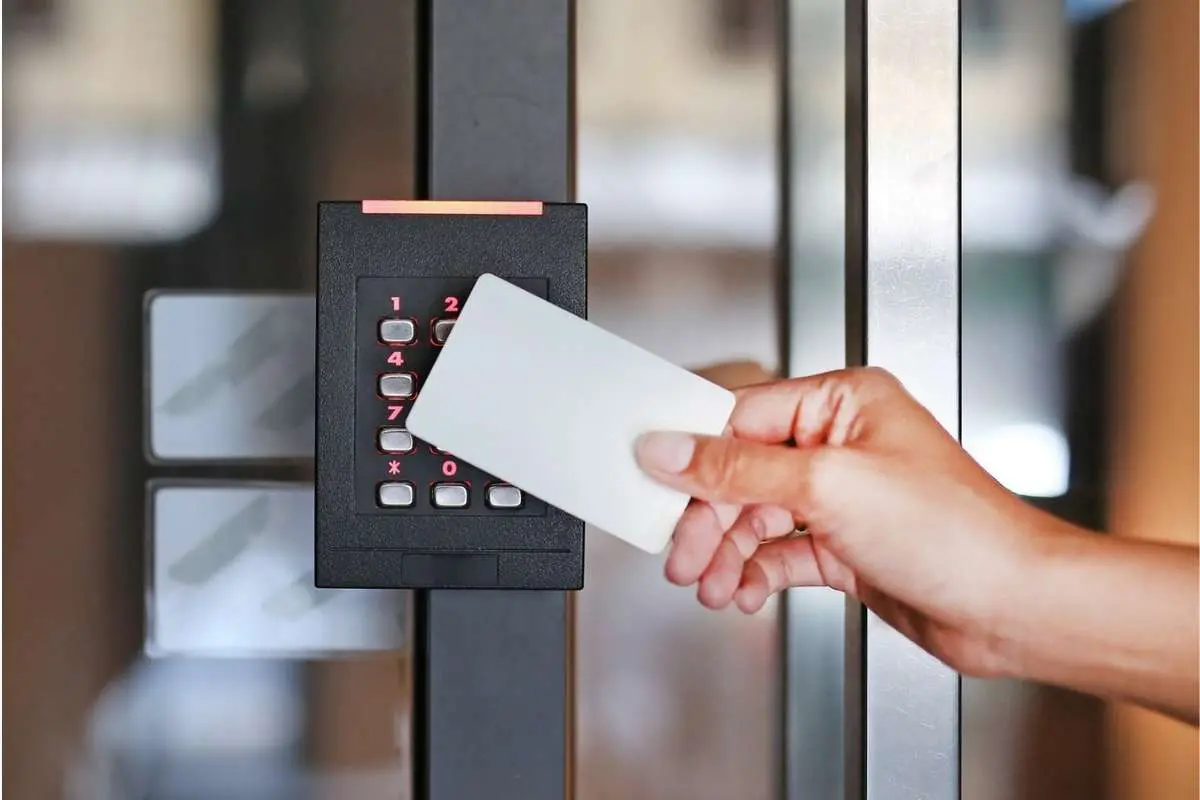
Understanding The Different Types Of Access Control
In today’s digital world, all organisations need robust security to protect their people and assets. One crucial aspect of security is access control, which protects sensitive information and physical assets by ensuring that only authorised individuals can access certain resources or enter specific areas of a building. This is particularly important in the context of clocking-in systems, where accurate time tracking and employee authentication are essential for workplace efficiency and security.
With the advancement of biometric and proximity-based authentication, organisations can now use fingerprint readers, facial recognition and proximity readers as primary methods of reading identity credentials for authentication.
Using these devices in systems helps prevent unauthorised access, eliminate time theft and improve operational efficiency. However, each method presents unique advantages and challenges, requiring organisations to assess suitability based on security needs, cost and privacy considerations.
This article explores access control and its use in conjunction with time and attendance software. It discusses the different types of devices and the basic security principles underlying access control.

Reasons to Have Access Control Systems
The reasons for a business to have access control vary depending on the business type and size. While essential for maintaining security, it can also be used to manage workforce attendance and ensure compliance with legal regulations.
At the most basic level, it prevents unauthorised access to a building or sensitive areas, reducing the risk of internal or external actors committing theft, fraud, data breaches, or other criminal activities. When used in conjunction with clocking-in systems, access control helps track employee attendance accurately, eliminating issues like ‘buddy punching’ and unauthorised overtime, which can impact payroll and other functions within the business.
Access Control Systems with Time and Attendance Software
Time and attendance software and various types of access control systems can be integrated to offer a dual-purpose entry system. This presents a significant opportunity for operational gains, particularly in terms of security and productivity.
By using biometric or proximity readers, all members of an organisation can benefit from increased security, automation and modernisation around culture and working practices.
Access control readers can be seamlessly integrated into buildings, offering a secure and efficient method for employees to clock in and out. The system can automatically record the time and identity of each employee, reducing time theft and buddy punching, and offering a single source of truth for data.
This provides the backbone for integration with payroll, human resources and other functions. Reporting and analysis can become business as usual, and remote work can be logged and monitored.
Devices For Access Control
Devices such as fingerprint readers, facial recognition systems, and proximity readers are becoming increasingly common for securing entry to building areas. Used in conjunction with various types of access control models, they provide the system with the credentials for authentication, answering the question of who the person requiring access is.
Fingerprint Reader
Fingerprint readers are among the most common biometric devices used in clocking-in systems. They work by capturing and analysing the unique patterns of ridges and valleys on an individual’s fingertip.
Optical, capacitive or ultrasonic sensors capture fingerprint images.
The software then receives and analyses this image, comparing it with the user data it stores. When a match occurs following the presentation of one’s fingertip, access is granted, or clock-in and clock-out events are recorded.
Fingerprint readers are generally accurate, reliable, fast and challenging to bypass. However, they can be susceptible to false negatives or positives if the fingerprint is damaged or dirty or an inferior reader is chosen.
Some users have health concerns due to frequent touching by different people, but this can be addressed through policy and good hygiene practices. Some users will also have privacy concerns, a common concern for all biometric devices. This can be addressed through education and choosing a secure access control system.
Facial Recognition
Facial recognition technology has advanced significantly in recent years, making it a viable option for clocking-in systems. These systems use cameras, artificial intelligence and sophisticated algorithms to identify individuals based on facial features.
Facial recognition is contactless and considered more hygienic than fingerprint readers. Although it can be adapted to different conditions, including low-light environments, it can sometimes be affected by factors such as bad lighting and facial expressions, leading to false negatives or positives. Again, this makes the choice of reader crucial, as some devices are far superior to others.
Proximity Reader
Proximity readers use RFID (Radio-Frequency Identification) or NFC (Near-Field Communication) technology to authenticate employees through key cards or mobile devices. Employees tap or wave their cards/devices to gain access.
It can be combined with other authentication methods for additional security and avoids biometric privacy concerns because biometric data is not stored. The main downside is the risk of card theft and forgetting or misplacing cards. If users share their cards, they will be able to clock in and out for each other, a practice known as ‘buddy punching’.
The Fundamentals of Access Control
Access control is not limited to controlling who can and cannot enter a building. It is a fundamental concept in modern cybersecurity. Other examples of access control include your computer, the network on which it runs and modern cars.
All the aspects described below are relevant when considering access control to a building, especially when access devices are integrated with time and attendance software.
The core components of access control include:
- Authentication: This is the process of establishing a user’s identity, typically through methods such as passwords, biometrics, or multi-factor authentication.
- Authorisation: Once authenticated, authorisation determines what resources a user can access and what actions they can perform.
- Access: The actual granting of permission to use specific resources based on the user’s authentication and authorisation.
- Management/Administration: The ongoing process of maintaining and updating access rights and policies.
Access control systems implement several key principles to ensure effective security:
- The Principle of Least Privilege: Users should be granted only the minimum level of access necessary to perform their job functions.
- Separation of Duties: Conflicting responsibilities are separated to reduce the risk of unauthorised or accidental misuse of resources.
- Need-to-Know: Access is granted only to information that is essential for an individual to perform their duties.
Access control can be implemented through various methods, including:
- Access Control Lists (ACLs): Permissions attached to resources that specify who can access them and what actions they can perform.
- Group Policies: Rules applied to groups of users or computers to manage access rights.
- Passwords and tokens: A common form of authentication to verify user identity.
- Account Restrictions: Limitations placed on user accounts to control access.
Four distinct access control models provide a point of reference for the type of access control desired. These are:
- Mandatory access control
- Role Based access control
- Discretionary access control
- Role-based access control
Data privacy, monitoring, logging and auditing are also fundamental concepts that help organisations comply with regulatory requirements.

Access Control Models
The four primary models used as a base for designing access control systems were mentioned above. Each has its strengths and use cases.
Mandatory Access Control (MAC)
This is the strictest form of access control, typically used in high-security environments such as government and military installations. In MAC, the system administrator makes all access decisions, and users cannot override or change these settings.
A policy administrator centrally controls MAC. Security attributes are assigned to users, and attempts to perform an action, such as accessing a restricted area in a building or a file in a computer, are evaluated against those attributes. If access is not permitted, then it will not be granted.
While MAC provides robust security, its rigidity makes it less suitable for most commercial clocking-in systems in most businesses, where flexibility is often operationally advantageous.
Discretionary Access Control (DAC)
Discretionary Access Control offers more flexibility than MAC, allowing resource owners to determine the access rights of the resource they want to protect. In DAC, users with access to a resource can pass that access on to other users. This model is commonly found in operating systems such as Windows, which allows you to decide who you share your files with. Access control lists or token-based systems are commonly used.
In the context of building access, DAC is the least restrictive because once an individual is granted access, they can also grant access to others. Therefore, it requires careful management to prevent unauthorised access. However, it can offer good flexibility for small businesses.
Role Based Access Control (RBAC)
Role-Based Access Control assigns access rights based on users’ roles within an organisation and can be used to enforce MAC and DAC-based models. It is widely used in many organisations and is particularly well-suited for clocking-in systems.
For instance, while a team member may be able to clock in and out, only managers might have permission to view and manage attendance records. With access rights assigned to job functions, the administration of user functions is simplified, and a system using this model scales easily.
RBAC can meet the needs of many organisations. With users permitted to be assigned roles and roles permitted to access resources, security robustness can be achieved with simplicity. Simply put, RBAC can be used to define different levels of access for different groups of employees, ensuring that each user has the appropriate level of access to building areas and resources to perform their job functions.
Attribute-based Access Control (ABAC)
Attribute-Based Access Control is a more advanced and flexible model that uses a combination of attributes to determine access rights. These attributes can include user characteristics, resource properties and environmental conditions. Examples include time of day, device location and role.
Offering fine-grained access control, ABAC models can achieve dynamic and context-aware decision-making with the ability to implement complex access policies. Regarding building access, highly nuanced access control can take into account factors such as time of day, location, or specific project assignments when granting access.
Choosing Access Control with Time and Attendance Software
For all the benefits this dual system offers, it is important that the system’s security is addressed. The correct devices and software need to be in place, as any security breach may not be easily forgiven by employees. Adhering to security standards is critical.
To effectively choose a dual-purpose access control and clocking-in system, consider the following best practices:
- Choose a suitable provider who can advise you on the software, hardware and operating procedures required for an effective system.
- Based on your organisation’s needs and risk profile, choose the right combination of physical and logical access controls.
- Regularly review and update access rights to ensure they remain appropriate as roles change.
- Provide training to employees on the importance of security and proper use of access control systems.
- Balance security requirements with user convenience to encourage compliance and minimise workarounds.
- Regularly audit and test access control systems to identify and address vulnerabilities.
Future Trends
The field of access control is continually evolving, with emerging technologies shaping its future:
- AI and machine learning are being integrated into access control systems, enabling more intelligent and adaptive security measures.
- Internet of Things (IoT) devices are expanding the reach of access control, allowing for more comprehensive and interconnected security ecosystems.
- Behavioural biometrics, which analyse patterns in human activity, may provide even more secure and seamless authentication methods in the future.
Taking Stock
Overall, understanding the different types of access control is crucial for implementing effective security measures. When implemented with time and attendance software, businesses can achieve operational gains through increased security, data integrity and operational gains.
While there are many advantages for a business, seeking professional advice on these systems is important. The system should be chosen, implemented, used and maintained with skill so that security can be balanced with operational flexibility and cost.
